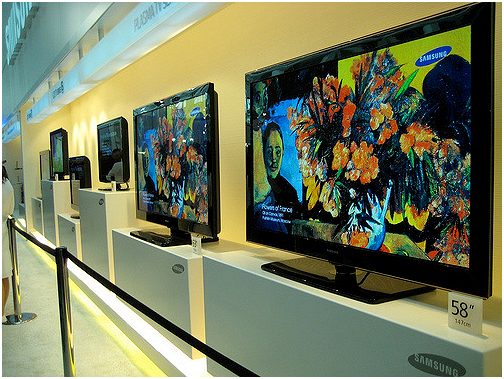Since John Logie Baird invented television in 1927, technology has proceeded apace. Below we look at ground-breaking developments in TV history.

1. CRT
Cathode Ray Tube (CRT) TVs date from the 1930s and dominated until the 2000s. Sets have electron guns that send electrons to a screen of phosphor.
2. LCD vs. Plasma
These two flat-panel technologies competed in the early 2000s. Liquid crystal display (LCD) panels are backlit by Cold Cathode Fluorescent Lamps (CCFLs), while plasma screens contain cells between glass panels. As LCD sets were more energy-efficient and cheaper, plasma sets declined in popularity.
3. Digital Television
Digital television was introduced in 2008. By 2012 Freeview had arrived and the UK switched to digital. Multichannel television then took off.

4. High-Definition Television
HD has a much greater resolution than previous types of TV, creating a sharper picture. Broadcasts in HD began in 2006: channel choice is vast.
5. 3D Television
In the early 2010s, 3D television made a splash following the release of 3D films such as Avatar. However, it failed to capture people’s imagination, as it was not comfortable to watch and you needed glasses.
6. LED TV
Light emitting diode (LED) screens emerged in the mid 2010s. The technology resembles LCD, but uses LEDs for a backlight rather than CCFL lamps.
7. Smart TV
Smart TV sets are connected to the internet. While interfaces are different, all have apps for streaming content. Extras include Netflix, Facebook and Twitter.
Correct installation locally is important. TV Aerial Installation in Swansea from https://www.onevisionltd.co.uk/tv-aerial-installation-swansea will ensure yours is properly in place.
8. OLED
Organic Light Emitting Diode (OLED) TV is similar to LED, but without a backlight. They can be as little as 1mm deep and have a good response time for fast-moving sports. Prices are dropping.
For the latest advice on TV technology, see https://www.which.co.uk/reviews/televisions/article/guides?source_code=614AKJ&gclid=CjwKCAjwgr3ZBRAAEiwAGVssnZ-czL5rSepuLcWrll_E2fMXbgqE-cLlilM8zPYa1EBmj2cqMHMpEhoCQasQAvD_BwE&gclsrc=aw.ds.
9. Video on Demand
With video on demand, you are freed from TV schedulers. You just need a tuner and box to pause, save or record programmes. Services such as Netflix even let you watch on a tablet or phone.
10. Ultra HD or 4K
Ultra HD or 4K is a set with a very high resolution. Pictures are amazingly realistic. Prices are now coming down, and these TVs make up over 50 per cent of purchases.
